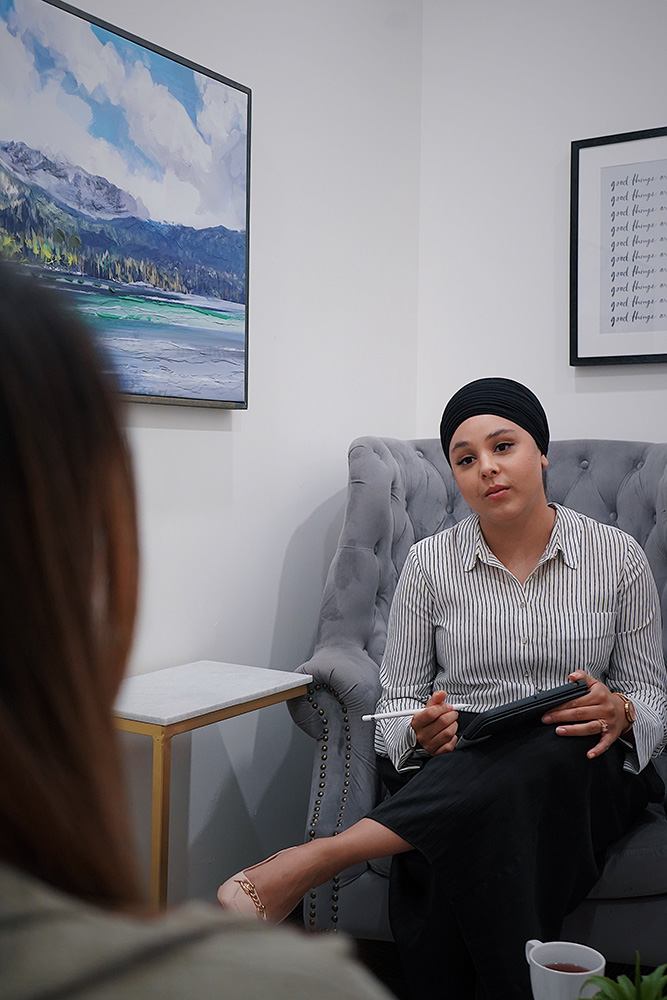Guided Self-Help Resources
Our Guided Self-Help resources are available to use either on your own or with the support of your practitioner.
Each resource works through step by step how to implement the intervention. There are worksheets included to help maintain a record of activities and progress.

Filter resources:

Perinatal Care Book for Dad’s
TalkPlus guides, workbooks and informational leaflets have been created to provide you with the resources and information you need to help with your mental wellbeing at any time or day that suits you. You may have been directed to this page by your therapist or you may have found this website via a search engine. Whichever it is, we hope you find these documents informative and helpful.

LTC Prehab- Get Fit and Ready project

LTC Problem Solving for people with a Long Term Condition
During this video, we’ll be talking about a technique called problem-solving, a practical approach to solving problems. This technique helps us to break our problems down into small, manageable chunks and take practical steps in a structured way to overcome these problems.

LTC Pacing for people with a Long Term Condition
In this video, we’re going to talk about pacing, a technique which can help you consistently carry out activities without causing a flare-up of physical health symptoms. Pacing is the technique of only doing an activity for the length of time that our bodies are comfortable with.

Behavioural Activation
This video focusses on how to increase our motivation when feeling low using a technique entitled behavioural activation. Avoiding and withdrawing are common symptoms of depression as you may find it difficult to carry out everyday activities.

LTC Boom and Bust Cycle for people with a Long Term Condition
In this video we look at the boom-and-bust cycle, what it is and why it might not be helpful for us. Living with a long-term physical health condition can often mean we can’t do things how we used to or the way we want to. Sometimes we can end up caught in an unhelpful cycle of negative moods and physical symptoms which can result in us doing less and feeling unhappy or frustrated.

Behavioural Experiments
In this video, we talk to you about how to do behavioural experiments which are one of the most effective methods to bring about positive change. In a behavioural experiment you put your beliefs to the test. This can be very helpful because faulty beliefs are often at the root of people’s emotional problems, such as depression and anxiety.

Challenging Unhelpful Thinking
In this video, we talk to you about a way to improve your mood by challenging unhelpful thinking. Challenging unhelpful thinking is an evidence-based approach to improving low mood or anxiety. It works by identifying negative or unhelpful thoughts and gathering evidence as to the accuracy of the thought. This evidence then helps us to develop a more realistic and helpful thought.

Activities
Learning about how to be more active is one way of helping to improve your mood and manage worry. There are many benefits for being active and it can give you a sense of taking control of your life and make you feel more confident. Focusing on the things that we’re supposed to be doing or the things that we enjoy can give us a sense of pleasure or achievement. Doing nothing can make you feel lethargic and tired and this can contribute to depression. Being active helps to reduce worrying or dwelling on negative thoughts. In this video we discuss the different types of activity and the benefits of being active.
People we have helped
All our testimonies are written by people who have used our service and wanted to share what our service meant to them. Testimonials are always anonymised.
Tuesday 26th March 2024 | 6:00 - 7:30pm
Learn how CBT Strategies For Menopause can empower women to navigate this transformative phase with resilience, providing effective tools to manage symptoms and prioritise mental well-being throughout the menopausal journey.
"*" indicates required fields
It has all the features and resources of our old site but in a fresh, easy to use format.
Please feel free to look around.







